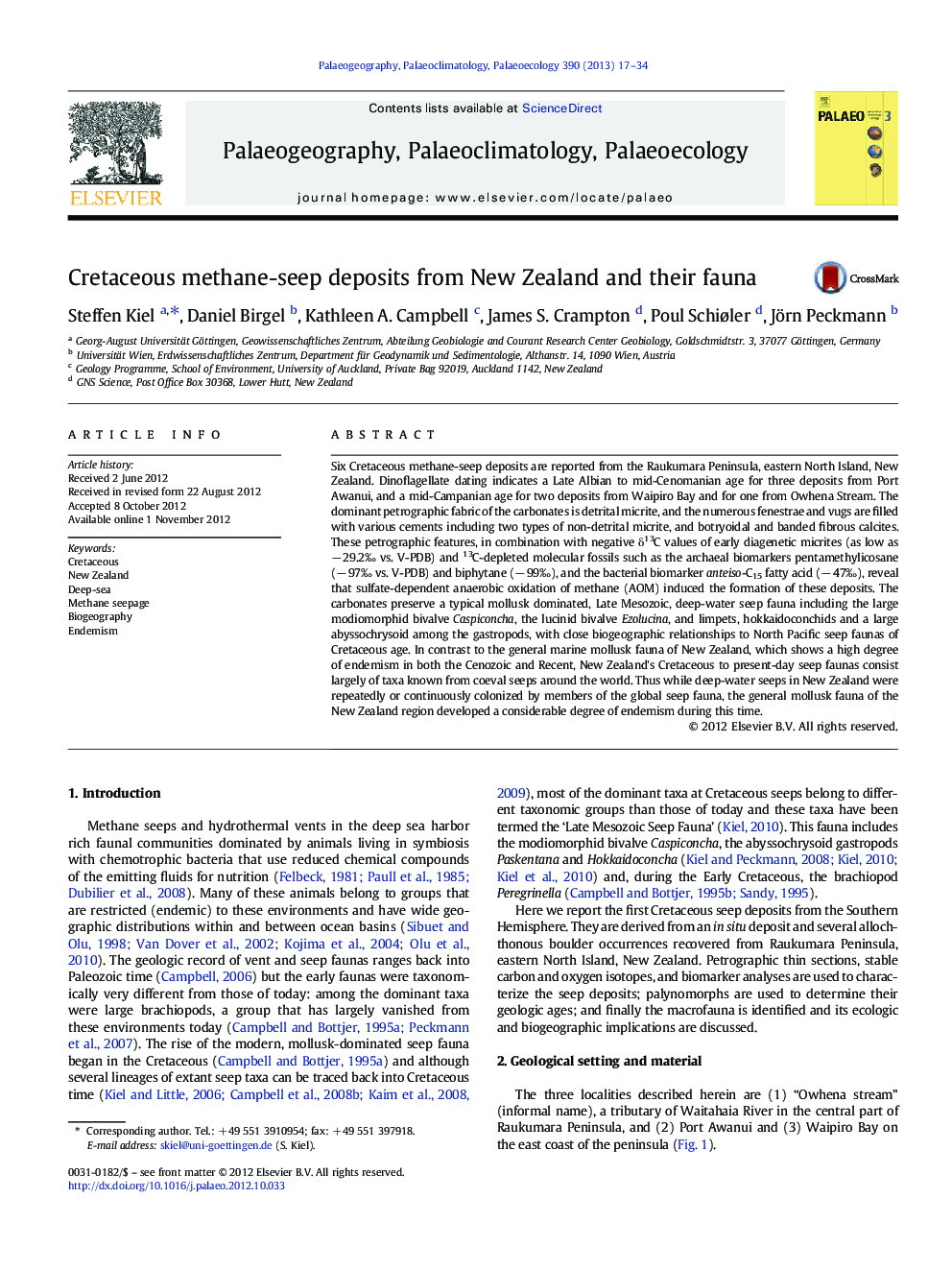| Article ID | Journal | Published Year | Pages | File Type |
|---|---|---|---|---|
| 4466492 | Palaeogeography, Palaeoclimatology, Palaeoecology | 2013 | 18 Pages |
Six Cretaceous methane-seep deposits are reported from the Raukumara Peninsula, eastern North Island, New Zealand. Dinoflagellate dating indicates a Late Albian to mid-Cenomanian age for three deposits from Port Awanui, and a mid-Campanian age for two deposits from Waipiro Bay and for one from Owhena Stream. The dominant petrographic fabric of the carbonates is detrital micrite, and the numerous fenestrae and vugs are filled with various cements including two types of non-detrital micrite, and botryoidal and banded fibrous calcites. These petrographic features, in combination with negative δ13C values of early diagenetic micrites (as low as − 29.2‰ vs. V-PDB) and 13C-depleted molecular fossils such as the archaeal biomarkers pentamethylicosane (− 97‰ vs. V-PDB) and biphytane (− 99‰), and the bacterial biomarker anteiso-C15 fatty acid (− 47‰), reveal that sulfate-dependent anaerobic oxidation of methane (AOM) induced the formation of these deposits. The carbonates preserve a typical mollusk dominated, Late Mesozoic, deep-water seep fauna including the large modiomorphid bivalve Caspiconcha, the lucinid bivalve Ezolucina, and limpets, hokkaidoconchids and a large abyssochrysoid among the gastropods, with close biogeographic relationships to North Pacific seep faunas of Cretaceous age. In contrast to the general marine mollusk fauna of New Zealand, which shows a high degree of endemism in both the Cenozoic and Recent, New Zealand's Cretaceous to present-day seep faunas consist largely of taxa known from coeval seeps around the world. Thus while deep-water seeps in New Zealand were repeatedly or continuously colonized by members of the global seep fauna, the general mollusk fauna of the New Zealand region developed a considerable degree of endemism during this time.
► The methane-seep deposits are of Albian–Cenomanian and Campanian age. ► Petrography, stable carbon isotope and archaeal biomarker indicate AOM. ► The faunas are similar to other Cretaceous seep faunas world-wide. ► The faunas show little endemism comparted to New Zealand's fauna in general.
